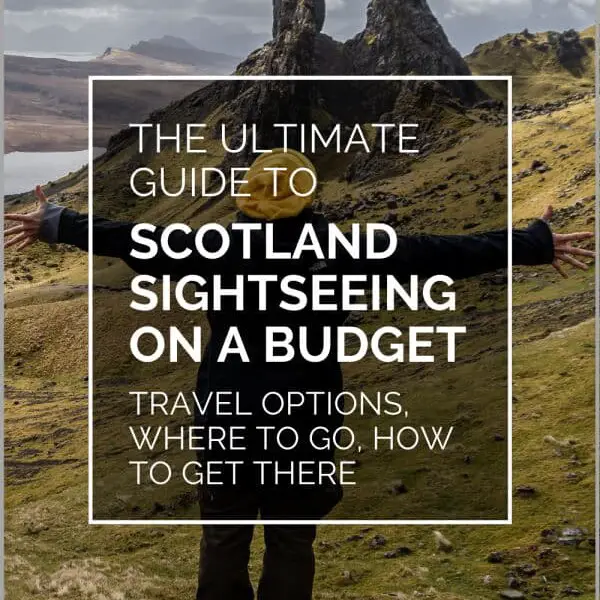With fuel prices constantly on the rise, it can be a real pain in the wallet trying to fit in all the best attractions on a long sightseeing tour. Scotland has plenty of sights and activities to attract wealthy tourists, but what about those of us who have to make our money stretch a wee bit further?
In this guide, you’ll discover the cheapest ways to travel in Scotland, from hiring cars to getting tickets for trains and buses, along with 10 must-know money-saving travel tips that could save you a small fortune.
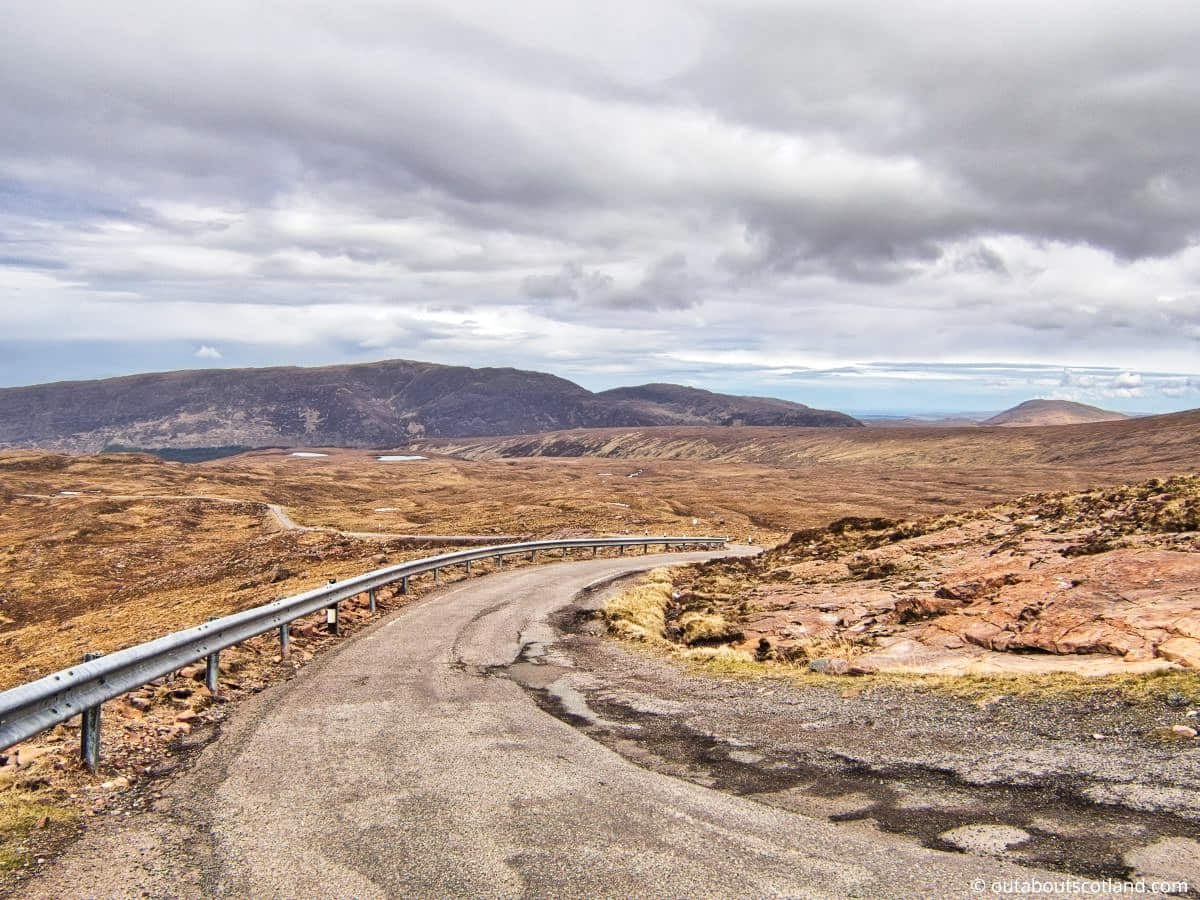
Save Money on Car Travel in Scotland
By far the most popular form of transport in Scotland is the car, and around 65% of all journeys are made using this form of transport.
Generally, the Scottish road network is easy to use, with well-maintained surfaces that stretch to the remotest corners of the country, but sadly, the cost of using it is becoming more expensive with each passing year. Fuel prices in Scotland are on the increase and are currently (as of 2024 from the RAC website) around £1.50 per litre of petrol and £1.60 per litre of diesel.
That means filling up an average family hatchback like a VW Golf will cost you around £70, which would give you around 500 miles of driving. So a two-week self-drive holiday in Scotland covering about 1,500 miles would cost in the region of £210 in fuel costs alone, and that’s before the additional costs of a hire car and insurance, which I’ll cover in the sections below.
Beware of Collision Damage Waiver Contracts
Most car rental companies will feature their website prices in big, bold numbers in an attempt to look the cheapest, but 9 times out of 10, they’ll subsequently hit renters with extortionate fees when it comes to insurance.
One of the biggest complaints is the cost of the CDW, a contractual term where the rental company waives its right to claim compensation from the customer for damage to the rented vehicle. Unfortunately, a basic CDW cover usually excludes damage to tyres, wheels, wing mirrors, windows, hub caps, the undercarriage, and the roof of the car.
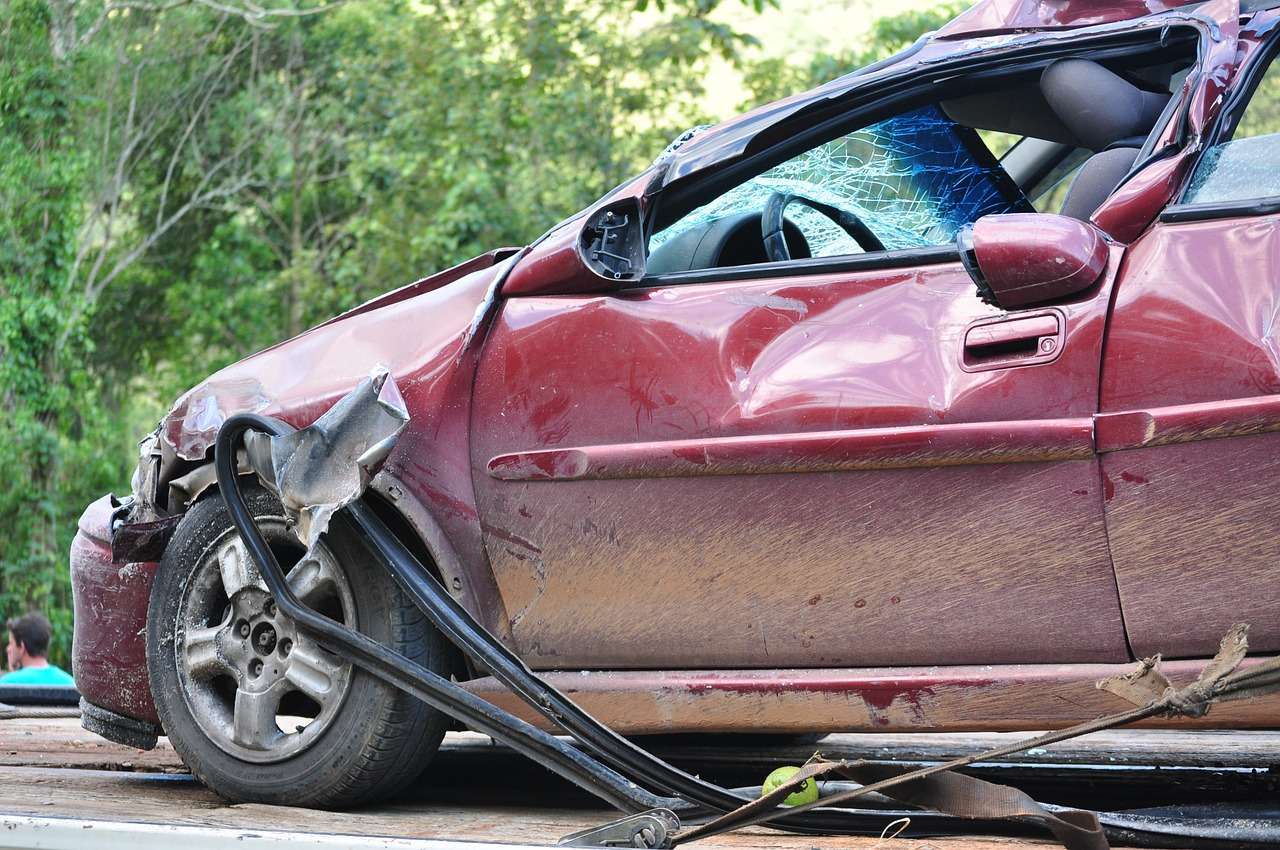
It also frequently excludes towing costs in the case of breakdown and clutch failure, and these policies often only cover damage to another vehicle, so if you’re subject to single-vehicle damage (such as driving into a wall), then the CDW won’t cover you, and you’ll still have to pay the excess (anywhere up to £2,000). The rule here is that before you pay for CDW insurance, make sure you take the time to thoroughly read through the policy paperwork and don’t be afraid to walk away if you don’t like what you see.
Don’t Use a Rental Car Broker
Car hire is big business, and a new niche has opened up with car rental brokers advertising low prices on comparison websites where they offer to act as the middleman between the car hire company and the renter. However, the broker is only a sales agent, and the customer’s contract is always with the car hire company, so many customers find that when things go wrong, their brokers just wash their hands of the problem and tell their customers that they must deal with the car hire company directly.
Avoid the problem by doing your own research on several well-respected hire car companies and make your own comparisons. You’ll often find that the savings you make from not having to pay broker commission fees beats the ‘offer’ they were advertising anyway.
Stick to the big guns in the rental business, like SIXT, Hertz, Avis, and others who are members of the BVRLA, and be safe in the knowledge that should any problems arise, you can contact a trade body that will attempt to resolve the issue on your behalf.
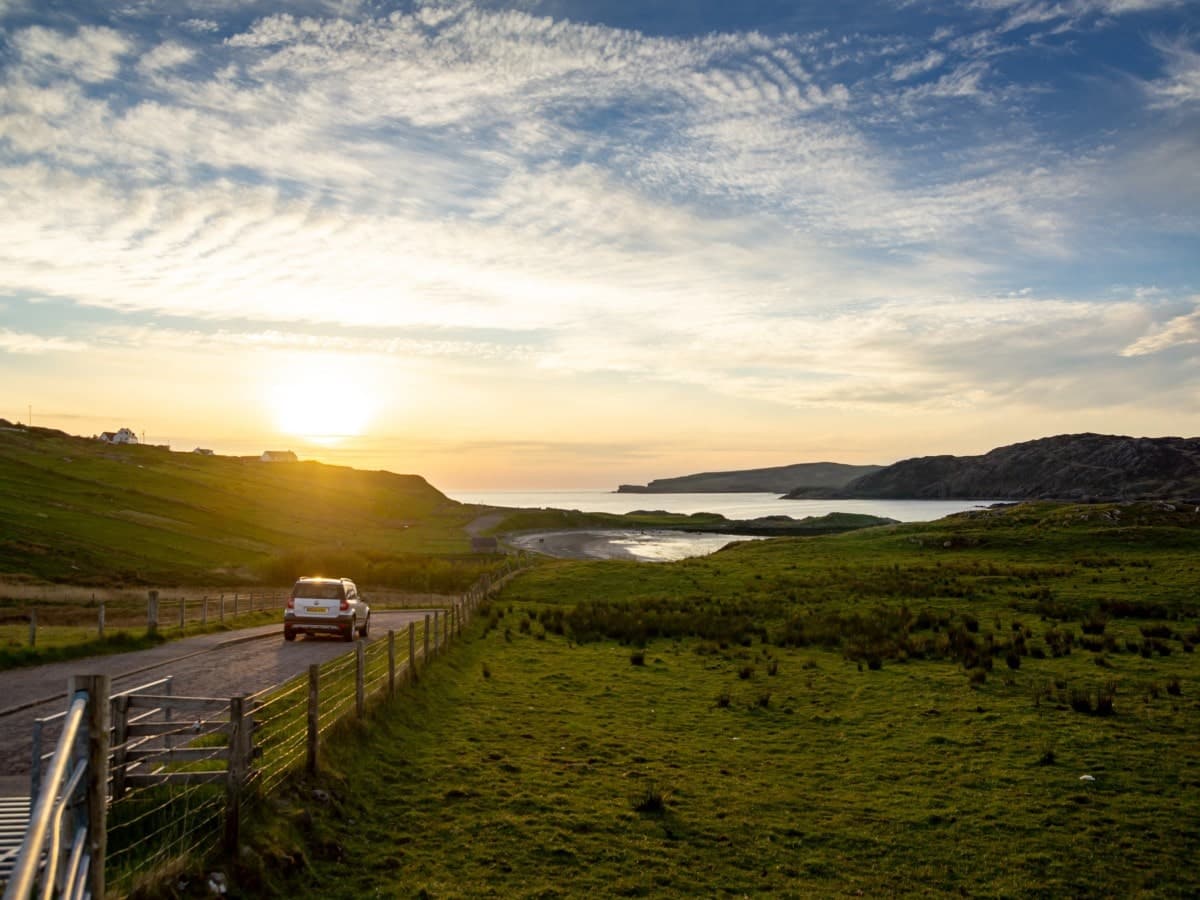
Watch Out for Sneaky Upgrade Offers
Rental pick-up desks will often try to sell you an upgrade to a bigger car by hard-selling you the advantages of a larger vehicle over the one that you’ve pre-booked online. Many of these agents are working on a commission basis, so it’s in their interests to make you spend as much money as possible, but frequently, these ‘upgrades’ are completely unnecessary.
Quite often, customers from the U.S. are picked out for these upgrade offers due to the fact that they’re used to bigger cars than we tend to drive in the UK. But there’s a reason we Brits love our compact cars. They’re easy to park in cities, they’re economical, and they’re perfect for our narrow country roads.
So before you fall for the hard sell, think about your situation. If you’re only going to be driving in Scotland for a week and there are just 2 of you plus suitcases, do you really need a 9-seater Mercedes minivan? Whole families of Brits quite happily spend years zooming about in Minis and Ford Fiestas, so there’s no reason why you can’t cope with a compact car for a one-week vacation.
Do you need a car?
Sure, cars have their place and they make it easy to head off in any direction at a moment’s notice, but have you considered how much of your holiday will require a private car? If you’re visiting Scotland from overseas, then it’s likely you’ll want to spend at least a few days in our major cities, and Glasgow and Edinburgh have more museums, art galleries, theatres, historic attractions, and fun activities than you can shake a stick at. As a bonus, both cities offer first-class public transport systems.
Edinburgh, in particular, has invested millions of pounds into its public transport infrastructure to the point where many residents don’t even own a car. Not only is there the excellent Lothian Bus network but there’s an equally impressive tram system, and the national railway lines run straight into the heart of the city at Waverley station.
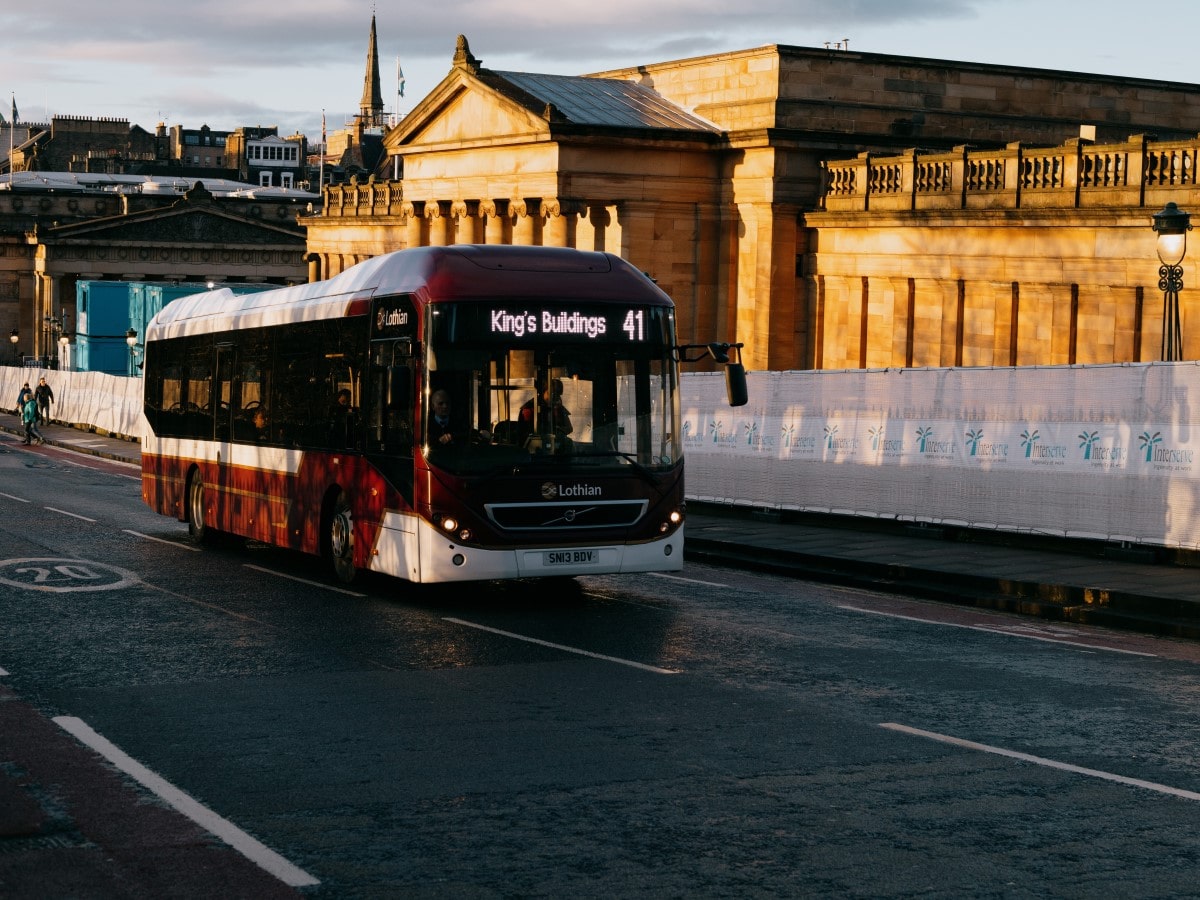
Glasgow, on the other hand, is only an hour away from Edinburgh by train and has the nationwide First Bus network of buses running throughout the city as well as its own subway system and numerous black cabs.
Another thing to think about is: have you decided if you’re going to take any organised tours during your holiday? Tour companies like Rabbie’s small group tours of the UK and Ireland will be only too happy to drive you around, and many of their tours start and end in the main cities, so you won’t have to travel far from the city centre to find your tour bus.
Driving Safety Tips
- If you’re driving in the Highlands, fill up with fuel whenever you can because petrol stations are few and far between.
- If you become stranded, you can usually get a phone signal to call for help, but make sure you have enough charge. It’s worth keeping a battery pack in the car at all times.
- It’s illegal to hold a phone while driving in the UK, so invest in a windscreen or dash-mounted phone holder.
- The remotest areas of Scotland (the Highlands and Islands especially) can be confusing for new visitors, so take a good up-to-date sat-nav with you, along with a paper map as a backup. Buy OS Landranger maps direct from Ordnance Survey.
- If you’re driving in winter, take an emergency bag containing the following: high-energy snack bars, water, a warning triangle, a foot pump, jump-start leads, and a blanket. Buy car emergency kits from Amazon.
- In case you break down, make sure you keep the fuel tank topped up so you can keep the engine running to stay warm.
Save Money on Bus Travel in Scotland
By now, you might be thinking that using a car isn’t the best way to visit Scotland, although it certainly offers lots of opportunities to see attractions that would otherwise be out of reach. If you’ve decided against driving yourself around our beautiful country, why not let someone else do the work for you by using Scotland’s excellent bus network instead? With that thought in mind, let me show you a few helpful tips you might find useful while using Scotland’s buses.
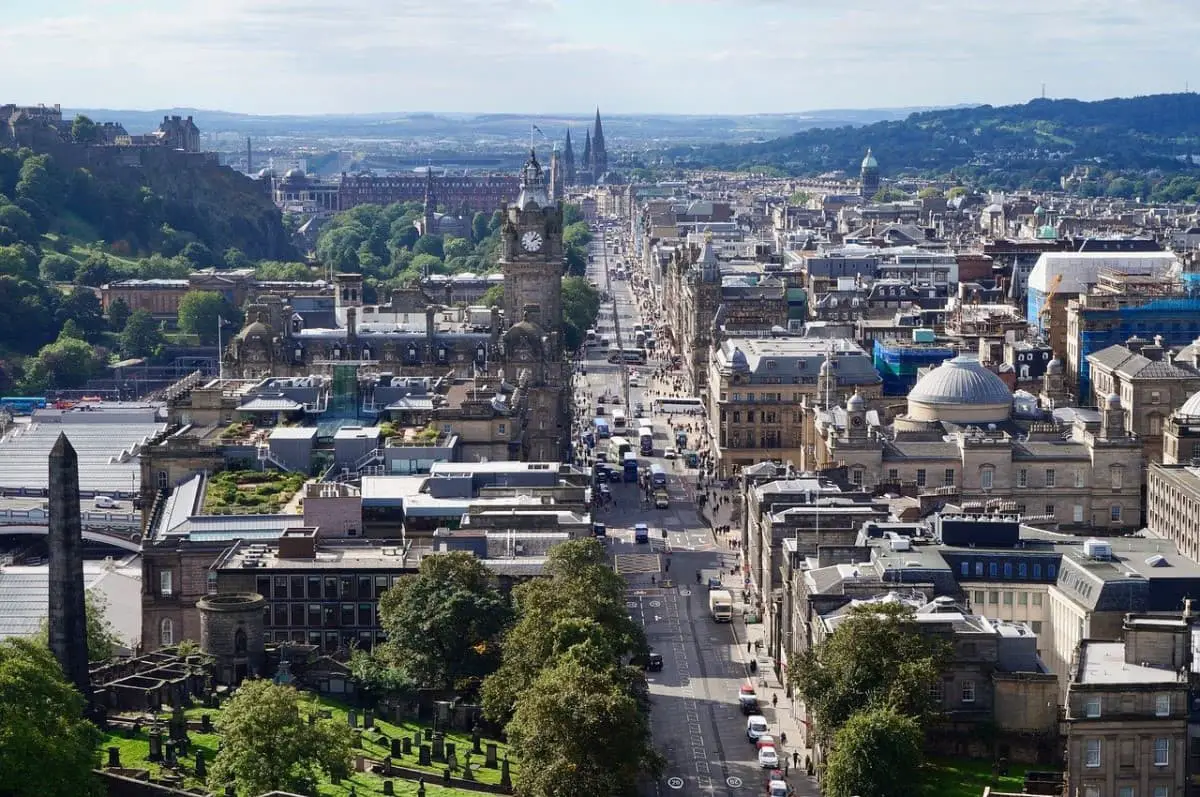
Use Trams and Buses
Both Scotland’s capital city and its larger cousin to the west have excellent bus networks that will get you anywhere in either city for a fraction of the cost of taking a taxi. Edinburgh, in particular, has a world-leading public transport system with cheap, clean, and well-maintained vehicles. The bus network runs through Edinburgh and out to the surrounding areas, while the trams provide a fast mode of transport over 9 miles from the airport to the city centre and Leith.
Visit the Transport For Edinburgh website for more information on Edinburgh’s trams and buses, or download the Transport for Edinburgh App which can help you find your way around the bus network with real-time bus tracking information.
If you’re going to spend time in Glasgow and want to use public transport, then the main bus operator is First Bus, which provides regular bus services throughout the city with over 100 routes to choose from. Most locals prefer to use the bus network as it’s one of the easiest and cheapest options for getting around the city centre and the outlying districts, and they also have regular links to the airport and train stations.
Use Coaches for Inter-city Journeys
If you need to travel between cities on a budget, then the coach company Mega Bus has you covered with a transport network that not only connects the cities of Scotland, but also includes England and Wales. As an example of the savings that are possible, while a train ticket from Edinburgh to Glasgow can cost upwards of £15 depending on the time of day, a cheap-rate Megabus ticket costs around £4, and you can occasionally find one-way journeys on special offer for £1.
Buy cheap bus tickets with Megabus.
While some people might turn their nose up at travelling ‘cattle-class’ (it’s not, they’re actually very comfy), you can upgrade your bus journey by choosing the Citylink Gold service instead.
This luxury bus service operates from Glasgow to Aviemore and Inverness, Glasgow to Aberdeen, and Edinburgh to Ferrytoll, Kinross, Perth, Dundee and Aberdeen, and offers a variety of upgrades over other coach operators. Onboard, you’ll find coach attendants, leather seats, Wi-Fi, and complimentary snacks and refreshments.
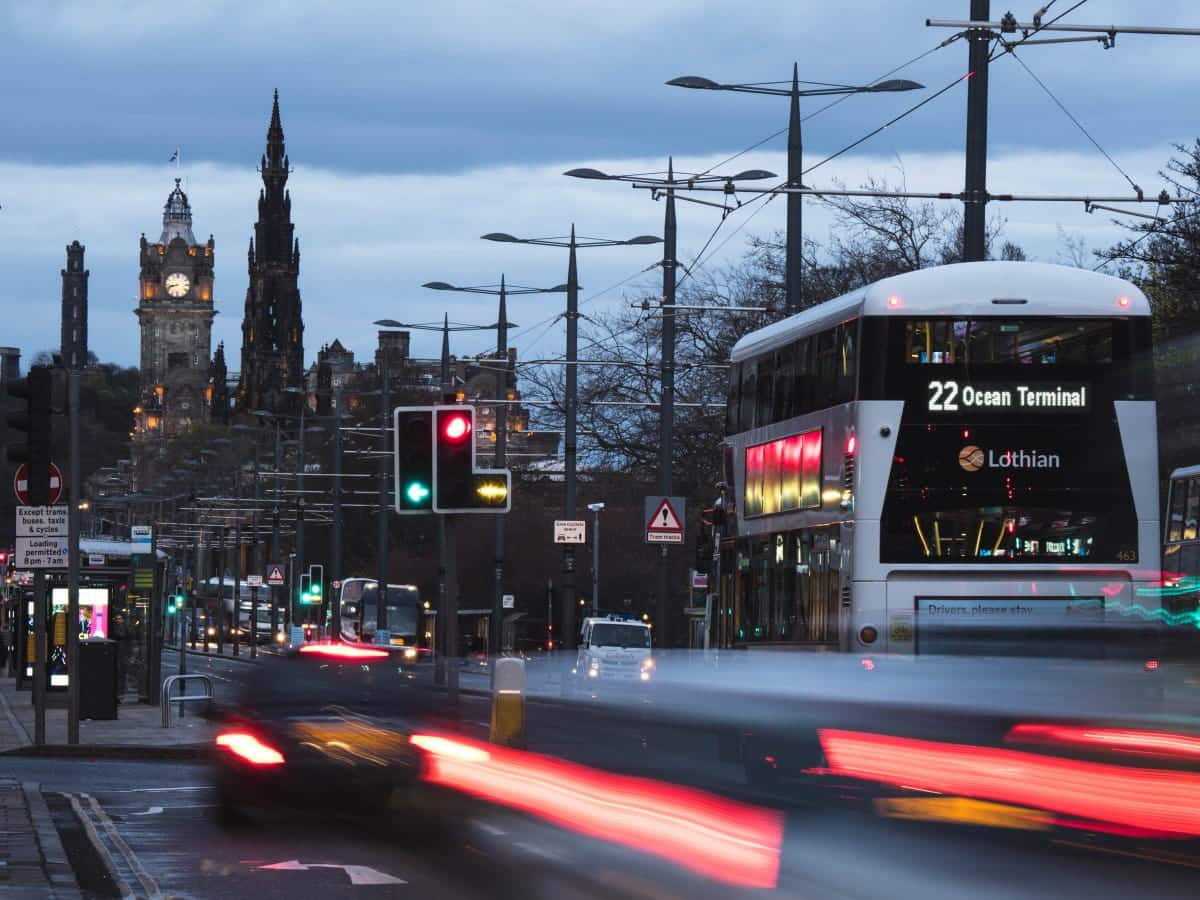
Don’t Buy Individual Bus Tickets
This is a great tip and one that you’ll find locals using all the time. While there’s no doubt that using the bus is a quick and cheap way of getting around the big cities, you can save even more money as a tourist by buying a day ticket. These bus tickets can be purchased for around £5 and will let you take as many journeys as you like in one day.
The beauty of a day ticket is that once you’ve bought it all you need to do is keep it in your pocket and present it to the driver each time you want to head somewhere new. That means there’s no need for the embarrassing fumbling around in your pocket for the correct change with a bunch of tutting locals waiting in line behind you.
Taking this even further, why not use a city tour bus as your main form of transport for the days you’re in Edinburgh or Glasgow? While these buses are a little pricey (upwards of £15 per person in many cases), you’ll get the benefit of open-top travel with a spoken tour that will show you the best attractions to see.
These tour buses are hop-on/hop-off services, so once you’ve done the main tour, you can use it again and again, as many times as you like, for the rest of the day. Bonus!
Save Money on Train Travel in Scotland
Britain has always had a love-hate affair with its rail network, with commuters frequently complaining about train services being cancelled due to it being too windy, too much snow on the line (an inch will usually do it), or mechanical failures (I think the UK must make most of their train’s critical components out of Lego).
But the humble commuter is fighting back, and online services like The Trainline offer instant online ticket booking at prices that are up to 40% discounted compared to buying the same ticket from a station. With British train tickets among the most expensive in Europe, it’s always handy to get a little extra help when it comes to buying your rail fare, and with a little prior planning, Scotland’s railways could be the ideal way to experience Scotland on a budget.
That being said, if you want to spend a little extra and take part in what has been voted the best railway journey in the world, I wholeheartedly recommend you save up a few extra pennies and book a ticket on the Jacobite steam train that runs from Fort William to Mallaig. It’s an absolutely stunning journey, which you can read more about in my guide to The Jacobite Steam Train.
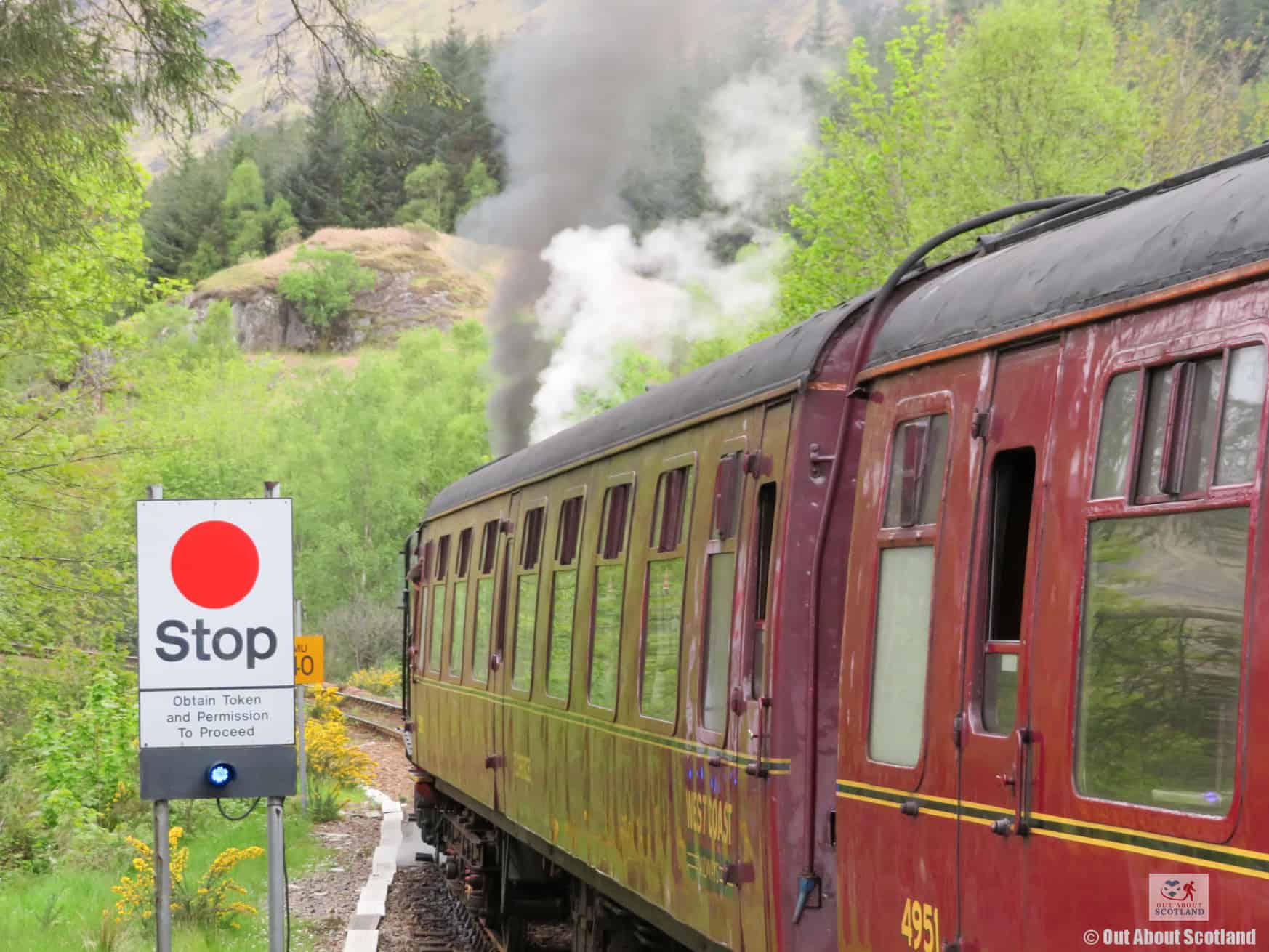
Railcards, Split Tickets and Advance Tickets
Railcards
Railcards can save you up to 33% on train tickets and you can occasionally even get a discount on the railcards (RRP is £30). You can also use Tesco Clubcard Points (the UK supermarket points card scheme) to purchase railcards to save even more. Remember that you MUST travel with your railcard to get the discount.
Split Tickets
On some journeys, it might be possible to split your ticket to save some money. For example, a direct single ticket from city A to city C could cost £50, but a ticket from city A to city B and a ticket from city B to city C might only cost a total of £40. Remember when planning your journey that the train must stop at each station in order to benefit from the savings.
Advance Tickets
Sometimes it’s cheaper to book an advance ticket rather than buy one on the day. On most rail booking sites, you can usually search for all routes for a specific journey, which sometimes brings up discounted on-the-day tickets as well as a variety of cheaper advance tickets.
Most advance tickets go on sale 12 weeks before the date of travel, although some rail booking sites offer tickets 24 weeks ahead of the journey but be aware that there’s usually a small additional fee for booking these advance tickets.
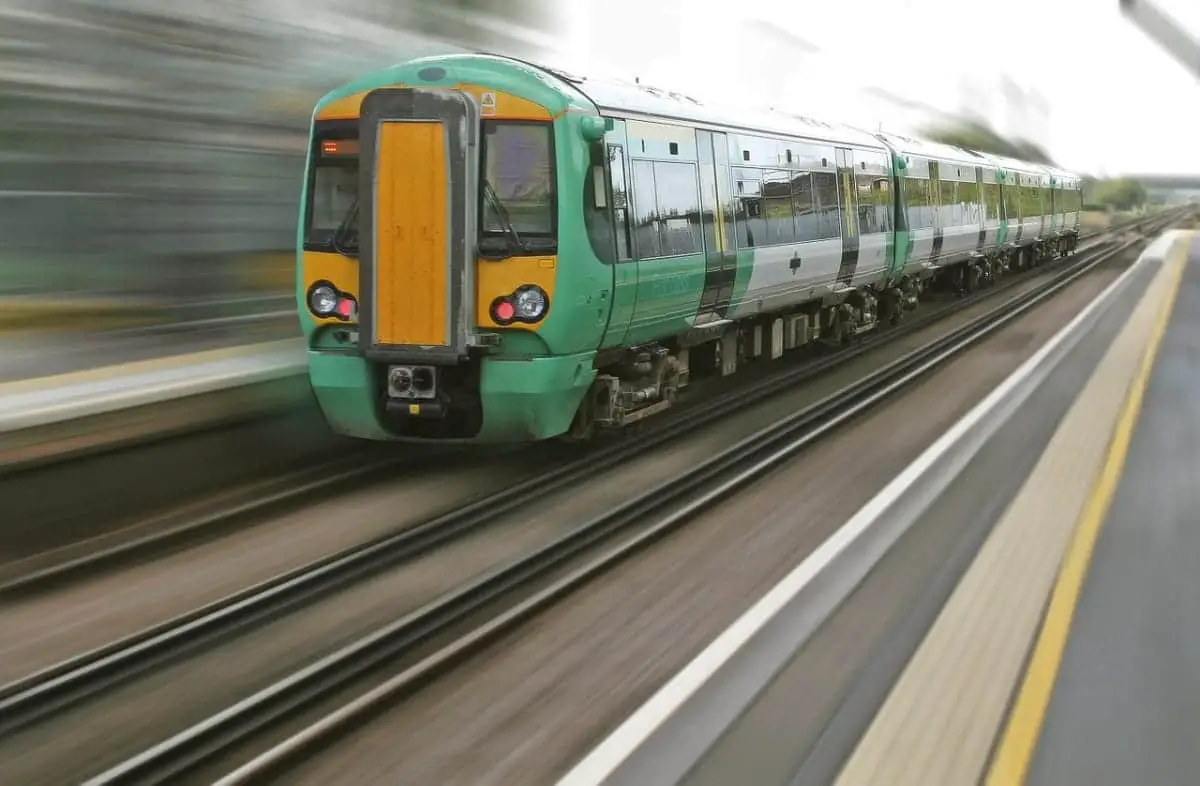
In Glasgow, Use the Subway System
Glasgow is unusual in Scotland as it’s the only city that has its own subway system. Although it’s not the cheapest option, the subway is by far the easiest way to get around the city centre and the west end. Trains run every 5 minutes at peak times and take just 24 minutes to complete a circuit of the 15 stations. You can either buy a single ticket or a Subway Smartcard, which offers the best fare prices and allows you to top up as you go. The Glasgow Subway map is a great way to find your way around the stations.
The south of Scotland is linked to the city by Glasgow Central Station, while Glasgow Queen Street Station has links to Edinburgh & the north of Scotland. The ScotRail website has information about all the available routes and timetables.
The SPT Roundabout ticket provides one-day of unlimited travel by rail and subway to over 110 stations in the Greater Glasgow area. You can purchase these tickets through ScotRail or SPT Travel Centres. Please note they are only valid from 09:00 Monday to Friday, all day at weekends, and on Scottish public holidays.
If you want to find out information about the various travel options in the Glasgow and Strathclyde areas, then check out the SPT Travel Centres in the city centre. Meanwhile, Traveline Scotland covers public transport across the rest of Scotland if you’re intending to travel further afield.
Facts About Train Tickets
Like the rest of the UK, there are three different types of train tickets you can purchase for your rail journey in Scotland. These are:
- Off-peak tickets are restricted for use only between the morning and evening peak times. These times are dependent on the train operator so check with them before purchasing.
- Anytime tickets are valid for use at any time of the day and are usually more expensive than off-peak tickets.
- First-class tickets are more expensive than the other two types but offer a higher standard of service, including free Wi-Fi and refreshments.

You can also purchase travel passes from Scotland’s various rail operators. These passes offer unlimited travel across the network for the duration the pass is valid.
The Spirit of Scotland travel pass offers unlimited rail travel throughout Scotland for either four or eight days.
Four days of unlimited travel over eight consecutive days costs £149, while eight days of unlimited travel over fifteen consecutive days costs £189. Note that these prices can vary depending on available special offers, so check the website in advance before you buy the pass.
The Highland Rover travel pass gives you four days of unlimited travel over eight consecutive days across the Highlands for £95. Although it’s only valid for standard class you can travel at any time and you’ll get 20% off Northlink ferry services to Orkney and Shetland.
The Central Scotland Rover travel pass lets you take unlimited journeys between Glasgow, Edinburgh, and the surrounding area for just £55. The pass lasts for three days and is valid for standard-class journeys on ScotRail trains, but unfortunately, you can’t use it on the new Borders railway line.
Frequently Asked Questions
How much will it cost to fill a hire car in Scotland?
The cost of fuel (as of 2021 according to the RAC website) is around £1.80 per litre of petrol and around £1.90 per litre of diesel.
That means to fill up a family hatchback like a VW Golf will cost you an average of £70, which would give you around 500 miles of driving.
What are the main bus operators in Edinburgh and Glasgow?
The Lothian Buses network runs through Edinburgh and out to the surrounding areas. The network includes trams that provide a fast mode of transport over 9 miles from the airport to the city centre and Leith.
Glasgow’s main bus operator is First Bus which provides a regular service throughout the city with over 100 routes to choose from.
How can I save money on Scotland’s trains?
The Trainline offers instant online ticket booking at prices that are up to 43% discount compared to buying the same ticket direct from the station.
You can also save money with a Scotrail Travel Pass and by buying train tickets up to 12 weeks in advance.
What are the best walking trails to travel in Scotland on foot?
Hiking in Scotland has always been popular thanks to the incredibly beautiful landscapes that we have here, with walking trails like the West Highland Way, The John Muir Way and The Southern Upland Way being amongst the most popular routes.
What is the cheapest month to go to Scotland?
The cheapest time to visit Scotland generally tends to be during the shoulder season which is typically from September to November and from March to May. During these months, the weather is usually still quite pleasant and there are fewer tourists, which can lead to lower prices for flights and hotels.
If you’re willing to brave cooler temperatures and possibly some rain you may be able to find good deals on travel to Scotland during the winter months as well.

